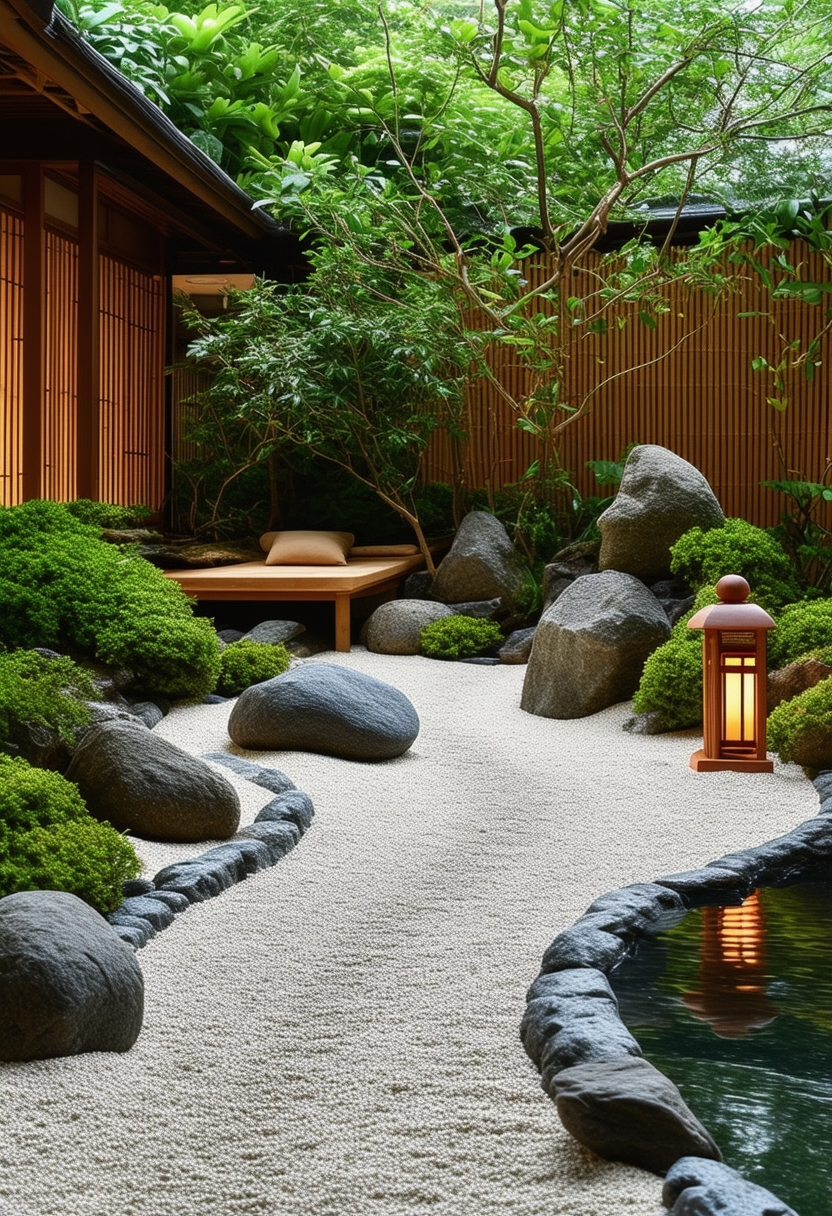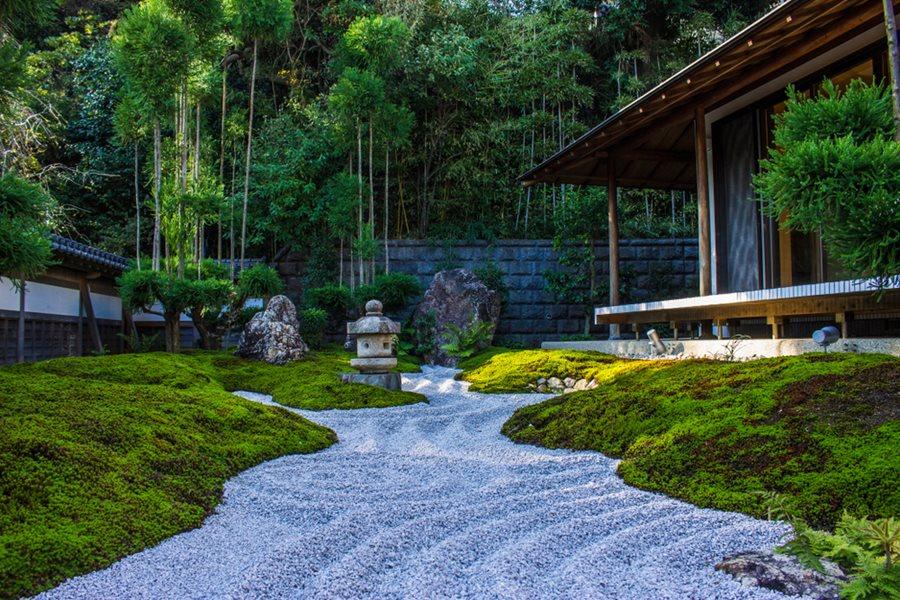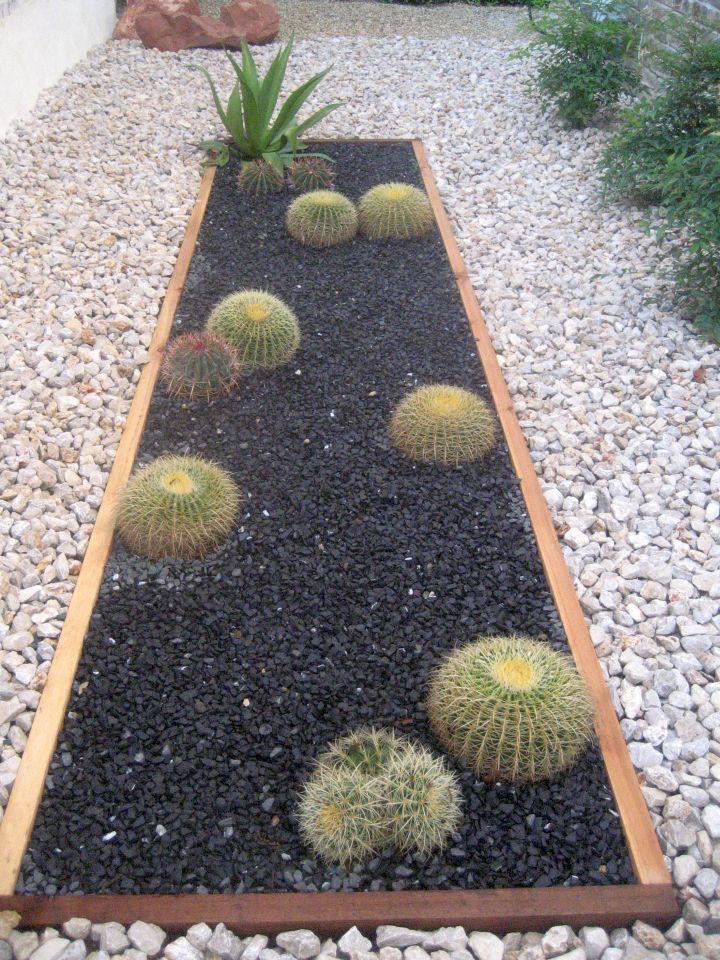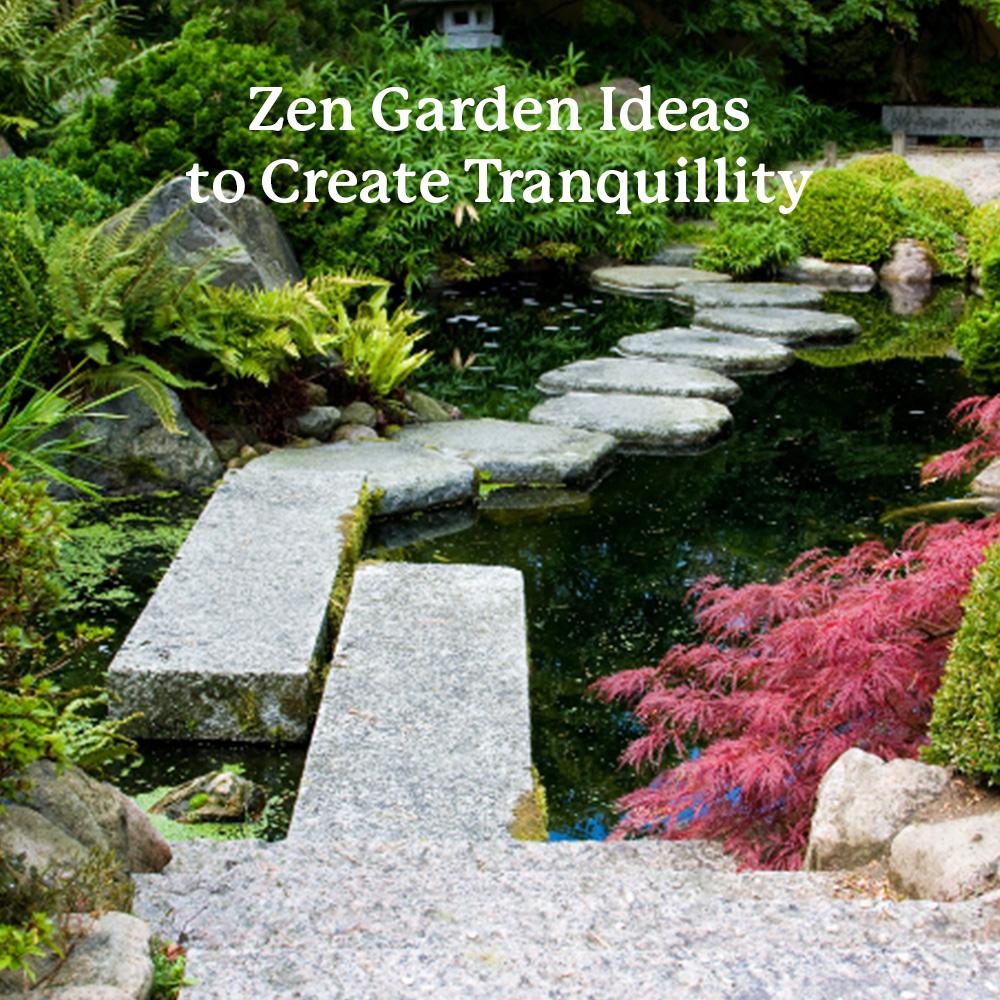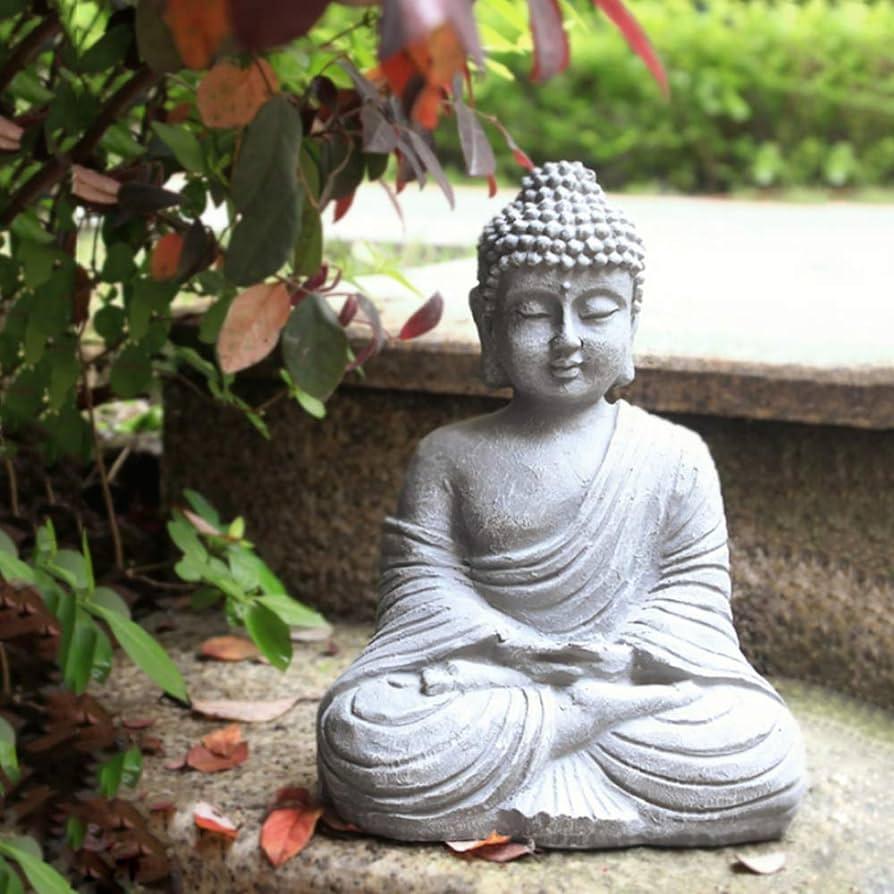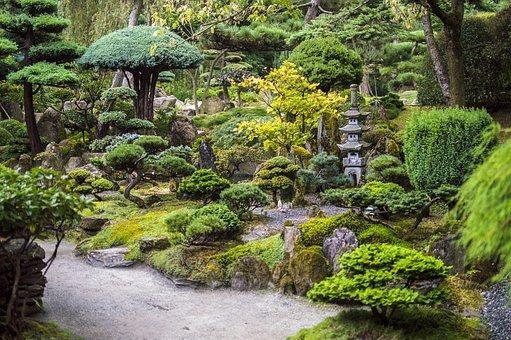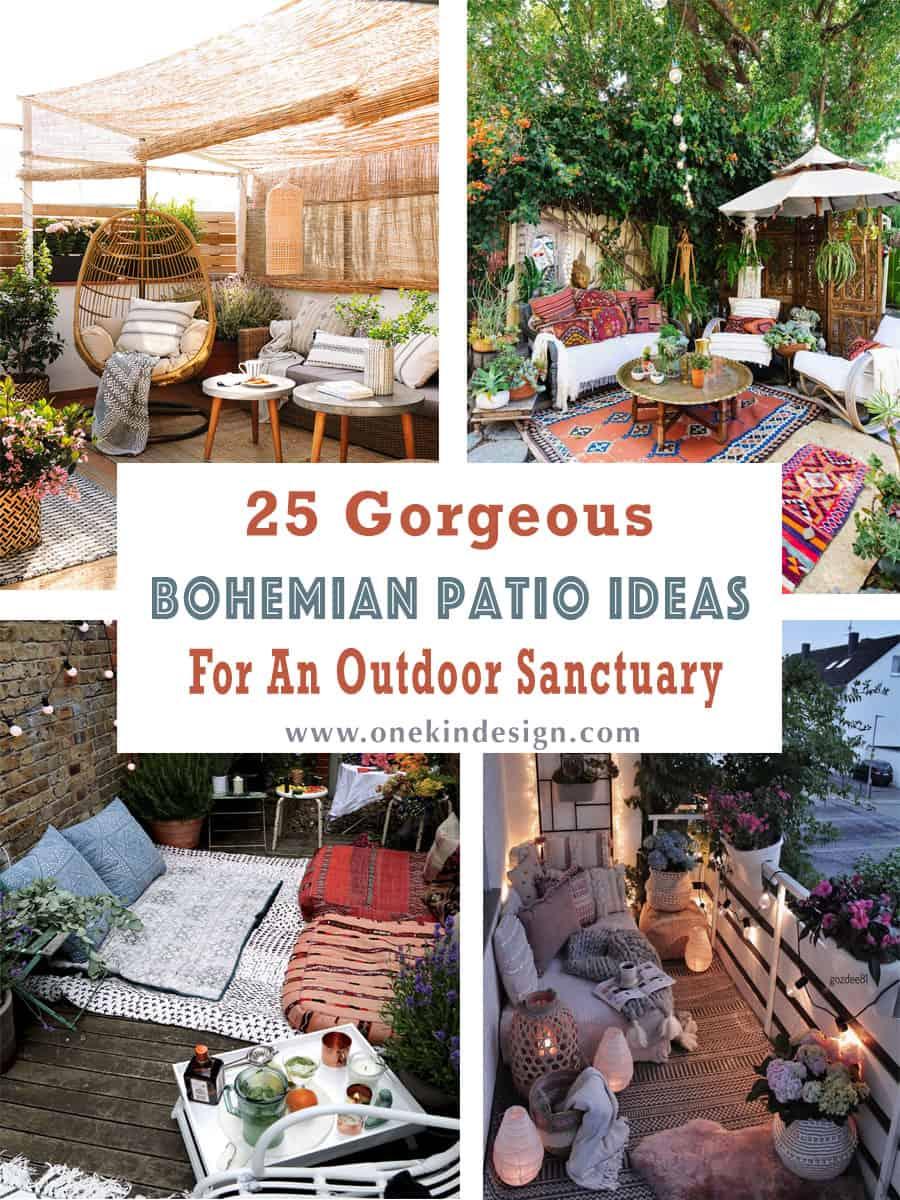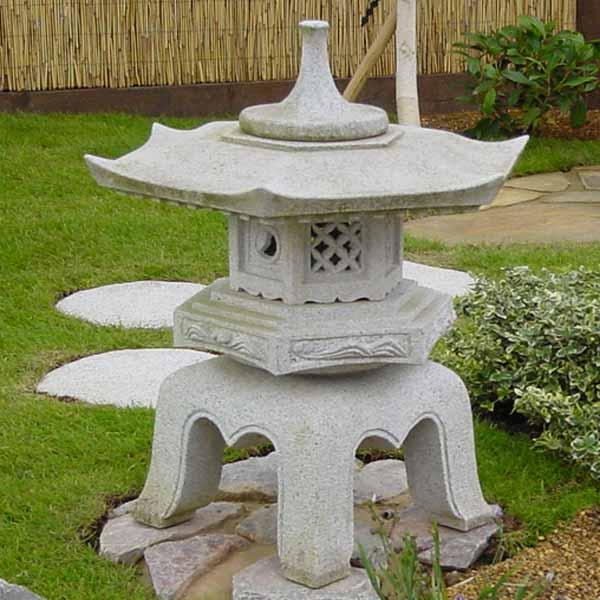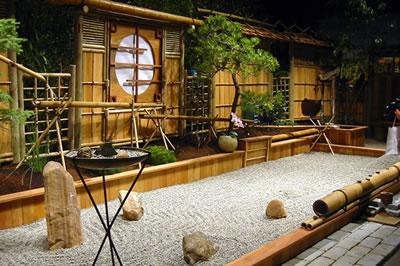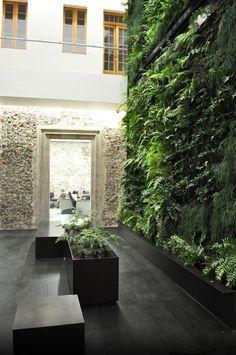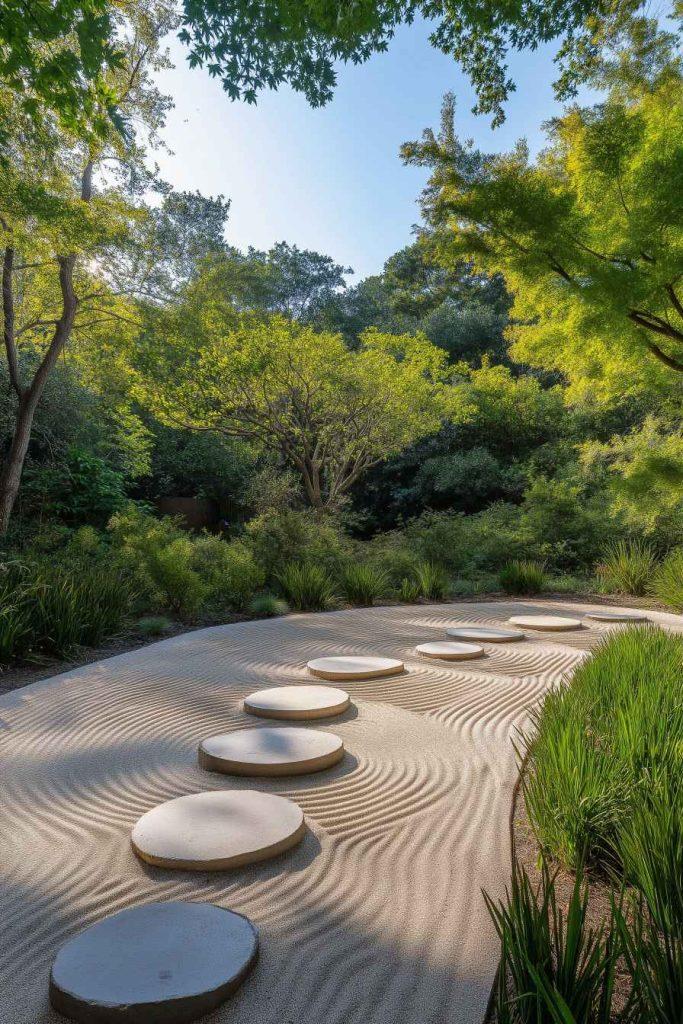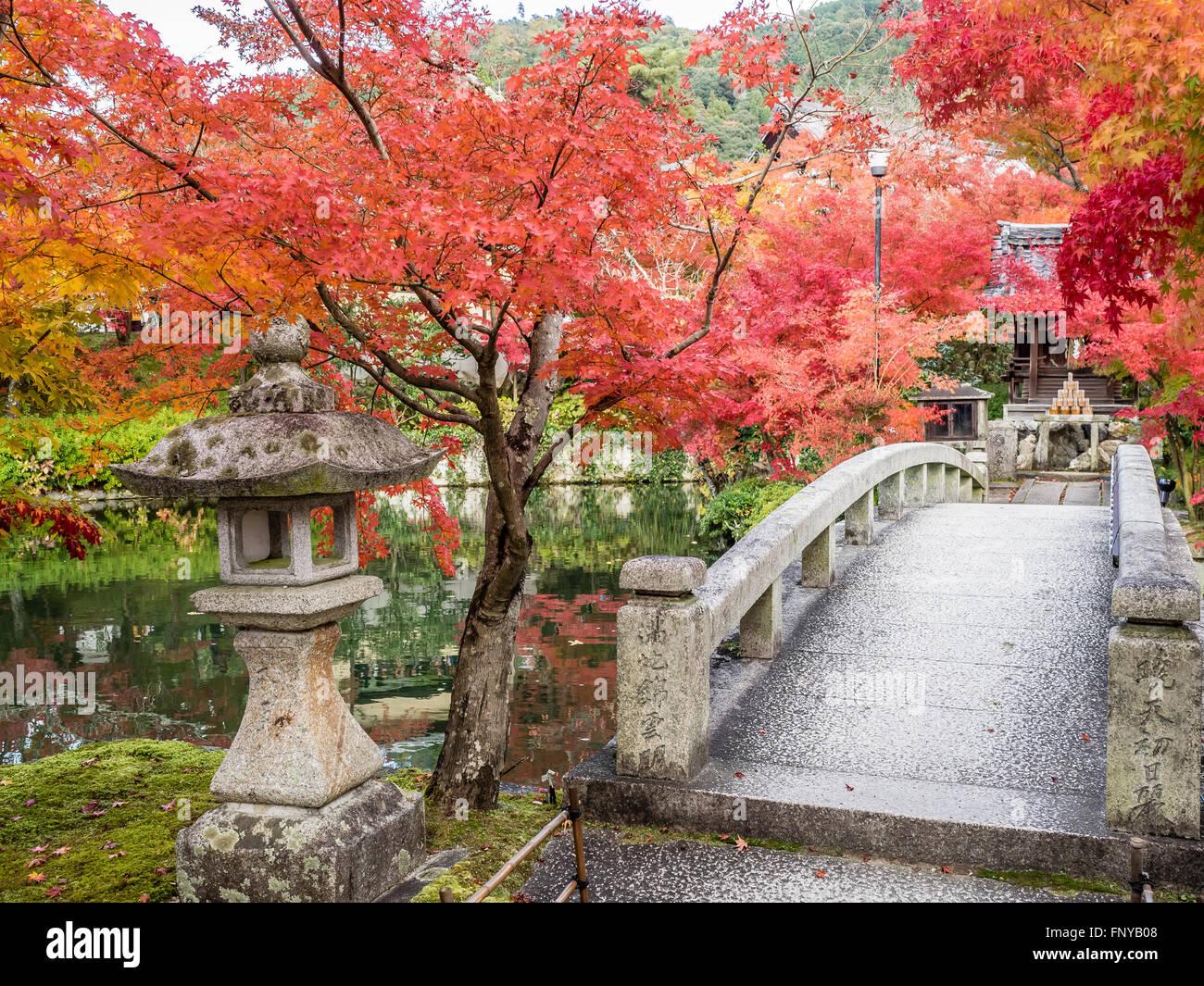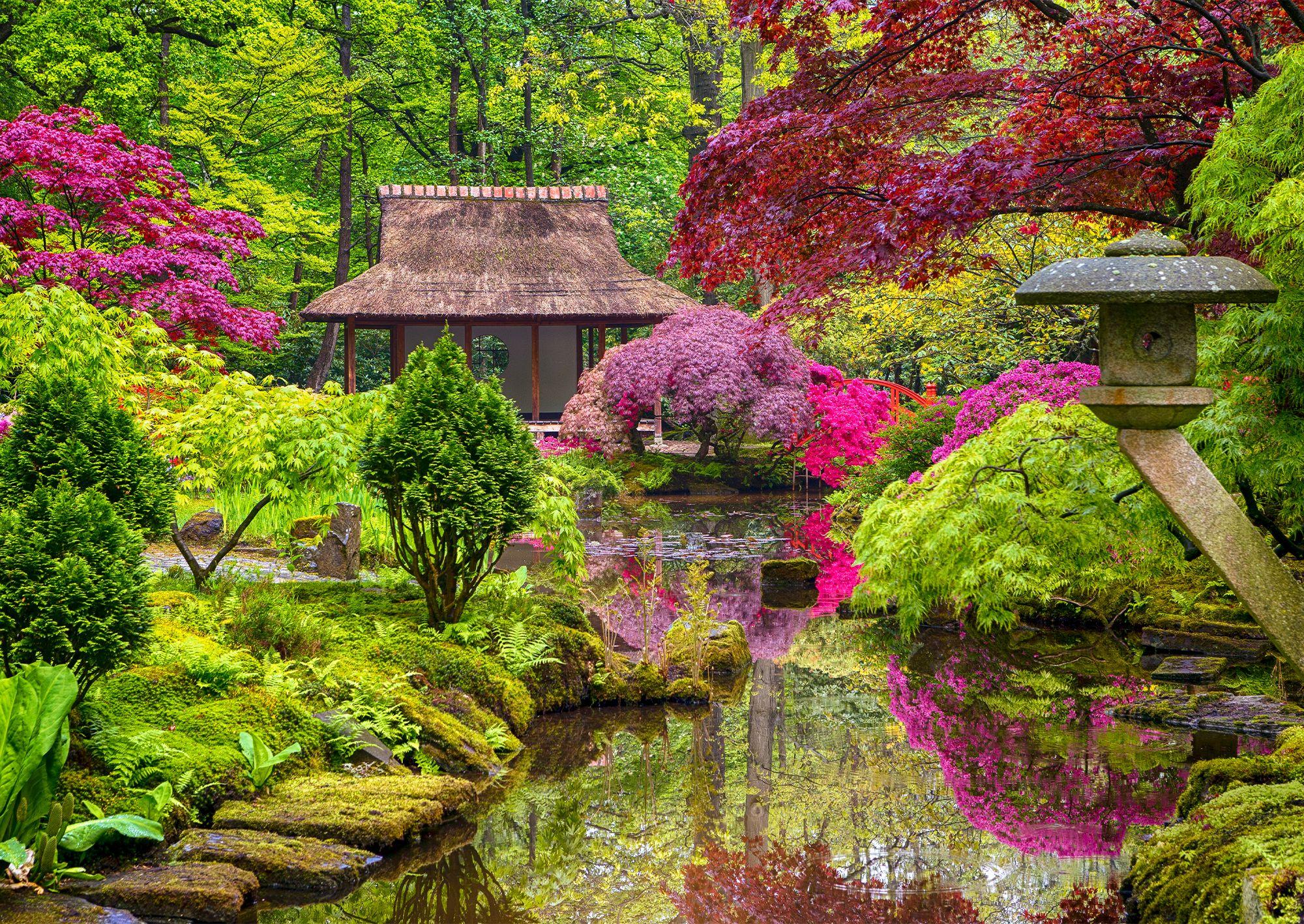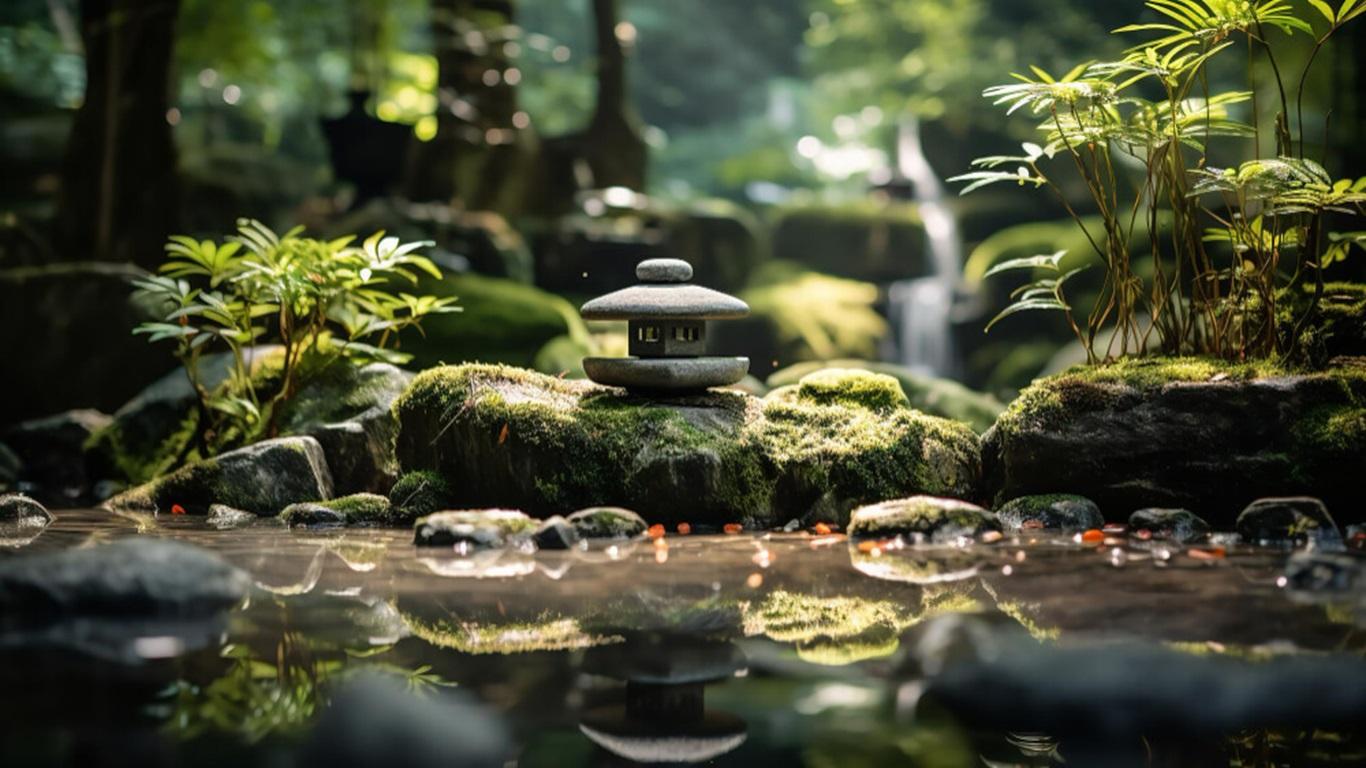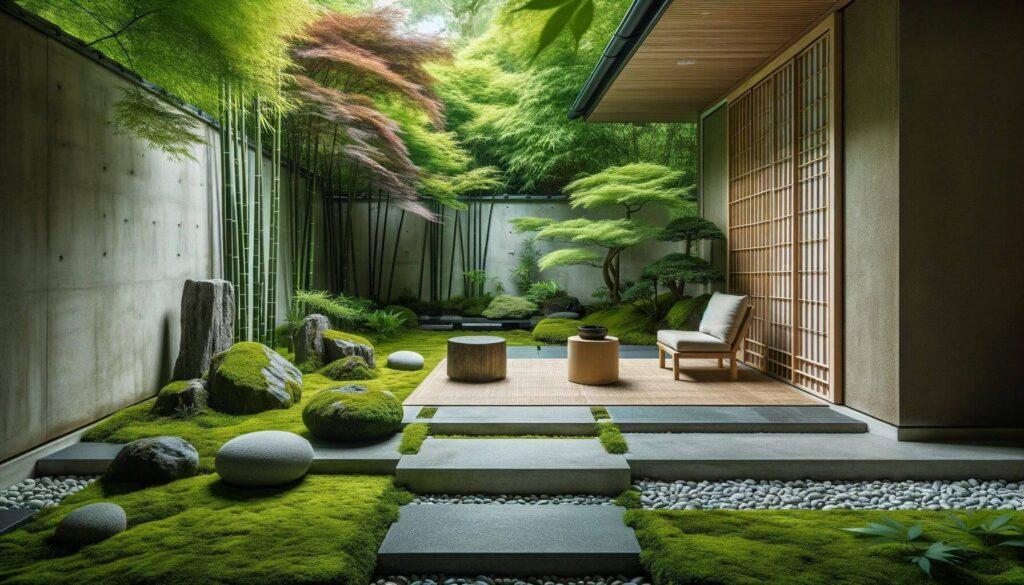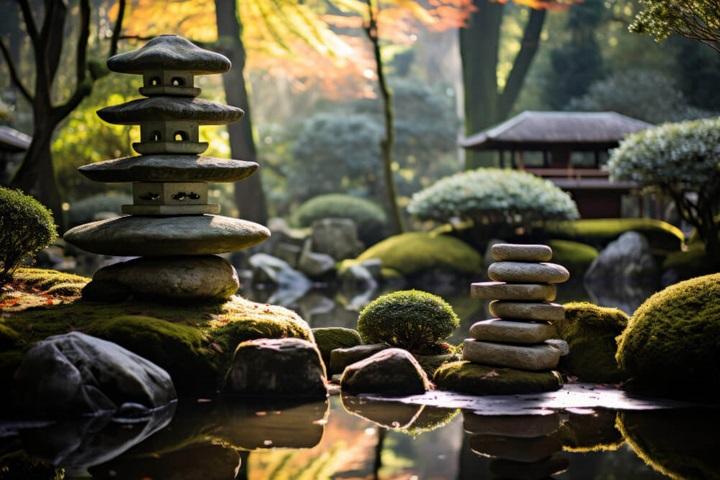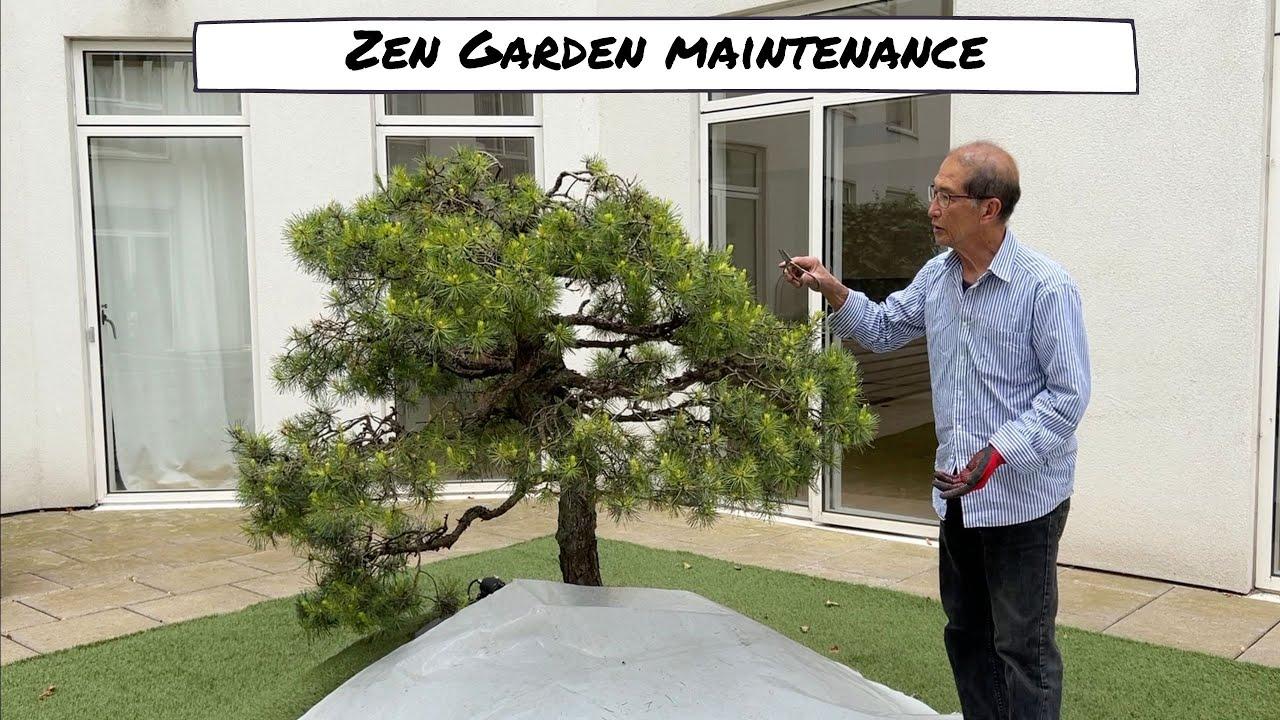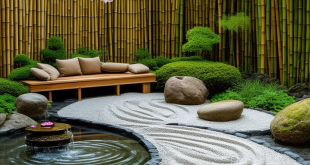Creating a serene sanctuary in your own backyard may seem daunting, but crafting the perfect Zen garden is an attainable goal with the right guidance and inspiration. In this listicle, we’ll explore 24 essential elements that will help you cultivate a tranquil oasis where you can escape the hustle and bustle of everyday life. From selecting the ideal stones and plants to incorporating water features and mindfulness practices, each item is carefully curated to enhance the harmony and balance of your garden space. Whether you’re a seasoned gardener or a beginner looking to dip your toes into the art of Zen gardening, you’ll discover valuable insights and practical tips to transform your vision into reality. So, let’s embark on this journey together and uncover the secrets to creating the perfect Zen garden!
Choose a peaceful location for your Zen Garden to enhance tranquility
Finding the right spot for your Zen Garden can significantly influence the sense of peace you experience while engaging with it. Aim for a location that is quiet and free from distractions, allowing the sounds of nature to become the soundtrack of your serenity. Look for areas surrounded by trees or shrubs, which can provide a natural buffer against noise. Avoid high-traffic zones or places that are overly exposed to direct sunlight, as these can detract from the tranquil atmosphere you aim to create. Balconies, small patios, or secluded corners of your yard can all serve as excellent candidates, providing an intimate space to reflect and unwind.
Once you’ve pinpointed a potential site, consider enhancing the serenity of the space with elements that complement your garden. Soft lighting can create a cozy ambiance, especially during twilight hours. Natural features, such as a water source or boulders, can evoke a sense of stillness and signify the beauty of imperfection. Consciously arrange your Zen Garden to encourage mindfulness. Position benches or stepping stones strategically, so they invite you to engage with the garden purposefully. By being intentional about the overall atmosphere, you’ll cultivate not just a space for relaxation but also an inspiring refuge for introspection. For more ideas on how to create tranquility in your garden, check out Gardenista.
Use natural materials like stone and wood for an authentic Zen Garden feel
Creating a serene atmosphere in your Zen Garden starts with incorporating natural materials that evoke a sense of tranquility and harmony with nature. Stone elements such as gravel, pebbles, and larger rocks can be strategically placed to form pathways or represent mountains. Similarly, using wood whether in the form of rustic timber benches, bamboo fences, or wooden bridges, can enhance the organic feel of your garden. These materials not only ground the space visually but also encourage a tactile connection, inviting visitors to walk barefoot on smooth stones or sit upon a weathered bench. Opt for materials that reflect local nature to foster a sense of place, helping your garden become an extension of its environment.
To further emphasize the natural aesthetic, consider creating distinct areas within your garden using different textures and shapes. Here’s a simple guide to integrating stone and wood:
| Material | Purpose | Tips |
|---|---|---|
| Stone | Pathways & Textural Interest | Mix sizes for variety and avoid uniform patterns. |
| Wood | Seating & Structure | Choose untreated wood for a natural look that ages beautifully. |
| Gravel | Ground Cover | Opt for rounded pebbles for a softer step. |
| Bamboo | Fencing & Accents | Consider using bamboo as a movable feature. |
Utilizing these organic materials offers not only an authentic look and feel but also harmonizes with the principles of Zen philosophy, promoting peace and mindfulness as you engage with each element of your garden. For further inspiration on incorporating such natural elements, visit The Spruce.
Incorporate sand or gravel for easy maintenance and a minimalist appearance
Opting for sand or gravel in your Zen garden can not only simplify upkeep but also enhance the tranquil aesthetic you’re aiming for. These materials serve as the foundation of a minimalist design, allowing you to play with textures while reducing the need for regular maintenance. Sand is particularly effective for representing water or smooth landscapes, creating a serene backdrop for your elements. Gravel, on the other hand, offers durability and easy drainage, which is essential for the health of any surrounding plants. Together, they form a cohesive environment that reflects the essence of Zen philosophy.
Consider incorporating a variety of sand or gravel sizes to add depth and contrast to your space. Here are some ideas:
- Fine Sand: Ideal for raking patterns that mimic rippling water.
- Coarse Gravel: Provides a crunch underfoot, enhancing sensory experiences.
- Colored Gravel: A subtle way to introduce playfulness without overwhelming the design.
When laying out your materials, think about creating distinct zones within your garden that guide visitors through thoughtful contemplation. This layering effect draws the eye and encourages an engaging physical journey. For more detailed inspiration, check out Japanese Gardening.
Select plants that promote serenity and harmony in your Zen Garden
Creating a haven of tranquility in your Zen garden begins with selecting the right plants that embody peace and harmony. Consider incorporating Japanese Maple, with its delicate leaves and stunning fall colors, which evokes a sense of calm. The Bamboo plant is another excellent choice, renowned for its graceful aesthetic and soothing rustle in the breeze. Additionally, Lavender offers a fragrant touch, promoting relaxation through its calming scent, while its vibrant purple flowers attract pollinators and enhance biodiversity.
Other plants that can seamlessly integrate into your serene landscape include Ferns, which thrive in shaded areas and bring a lush, green element to your garden, and Stonecrop, with its low-maintenance needs and resilience to various conditions. Adding a touch of elegance, Ornamental Grasses sway gently in the wind, adding movement and sound to your sanctuary. Landscaping Network can provide you with a wealth of ideas on plant combinations that enhance the overall aesthetic while promoting a sense of tranquility.
Create winding paths to encourage mindfulness as you walk through your Zen Garden
One of the most enchanting aspects of a Zen garden is the ability to create a meditative experience through the use of winding paths. Consider using natural stones or decomposed granite, arranged in a serpentine manner that encourages a gentle exploration of your garden. This design not only elongates the journey but also draws attention to the surrounding beauty, allowing you to savor each step. To enhance the experience further, you might incorporate moss or small pebbles along the edges, creating tactile contrast that resonates with each footfall and engages the senses fully.
The winding paths also serve to symbolize the journey of life – a notion deeply embedded in Eastern philosophies. By planting soft, fragrant flowers or graceful bamboo along the pathways, you infuse the space with serenity and tranquility, inviting moments of reflection. Consider establishing seating areas at strategic points where one might pause, breathe, and reflect on their surroundings. Filling these cozy nooks with comfortable cushions or low wooden benches encourages solitude and contemplation. For an additional layer of meditation, integrating a simple water feature nearby will provide gentle audio, effortlessly lulling the mind into deeper mindfulness. For more insights on creating a tranquil space, explore the resources at Gardening Know How.
Add a water element, like a pond, for soothing sounds and reflections
Introducing a water element to your Zen garden can greatly enhance its tranquility. Imagine the gentle sound of water lapping against the edges of a pond, creating a soothing melody that washes away the chaos of everyday life. A well-placed pond not only serves as a focal point, but it also invites wildlife, reflecting the sky and surrounding flora, and fostering a sense of connection with nature. Consider using materials like smooth stones or decorative pebbles to line the pond, creating a naturalistic aesthetic that harmonizes with the overall design of your garden.
To further elevate the serenity, think about incorporating a few essential features:
- Water lilies: These beautiful floating plants provide a splash of color while also helping to maintain water quality.
- Fish: Introducing koi or goldfish can enliven the pond and generate a calming presence.
- Submerged plants: They help oxygenate the water and provide habitat for aquatic life.
- Small waterfall: The sound of trickling water enhances the auditory experience, promoting deeper relaxation.
Incorporating these features into your pond can be simple and effective. For a quick overview of how to maintain your water element, consider the following tips:
| Maintenance Task | Frequency |
|---|---|
| Check water levels | Weekly |
| Clean filters | Monthly |
| Clear debris | As needed |
| Feed fish | Daily |
For more ideas on enhancing your outdoor space, visit Garden Design.
Include boulders and rocks for stability and to represent strength in your Zen Garden
Incorporating boulders and rocks into your Zen garden serves a dual purpose: they provide stability to the overall layout and symbolically represent strength and endurance. These natural elements anchor your garden’s design, creating a sense of permanence amidst the fluidity of sand and gravel. The most effective placements can create a harmonious balance, guiding the eye and mind to explore the space both physically and mentally. Consider the following types of rocks to enhance your garden:
- Large Boulders: Serve as focal points and symbolize mountains, evoking a sense of majesty.
- Flat Stones: Ideal for creating walking paths or seating areas, they offer both functionality and aesthetic appeal.
- Smooth Pebbles: Creating a top layer over sand can mimic rivers or streams, adding texture and interest.
- Craggy Rocks: Introduce ruggedness and individuality, representing nature’s untamed spirit.
When arranging your stones, aim for asymmetry to embody the natural irregularities found in the wild. Grouping stones in odd numbers can establish a more organic look, while varying their sizes and shapes can enhance the visual interest. Keep the ground around the boulders clear of clutter to emphasize their presence. Not only do these rock formations provide strength and stability within the garden, but they also invite contemplation and reflection, making them essential for your peaceful retreat. For inspiration and guidance on the best practices for using stones in your garden, visit Gardenia.net.
Choose a focal point, such as a statue, to guide meditation in your Zen Garden
Incorporating a focal point, such as a statue or a distinctive stone, can elevate your Zen garden into a sanctuary of peace. This central piece serves as a visual anchor, drawing the eye and offering a destination for meditation. When choosing a focal element, consider items that reflect your personal philosophy or interests. Classic options include:
- Buddha Statues: Representing enlightenment, these statues can impart a sense of tranquillity.
- Torsos and Other Abstractions: These can provoke thought and introspection, inviting deeper meditation.
- Natural Stones: A significant rock or formation can symbolize strength and stability.
To enhance the meditative experience, place the focal point thoughtfully in relation to the surrounding landscape. It should be positioned in a way that invites contemplation, ensuring it is visible from various angles within the garden. Consider integrating other elements such as:
- Pathways: Meandering paths can lead visitors towards the focal point, enhancing the journey.
- Water Features: The calming sound of water can augment the serenity the statue provides.
- Seating Areas: Benches or flat stones nearby can encourage visitors to pause, reflect, and engage with the environment.
When integrating your focal point, remember the power of simplicity; a minimalist approach often yields profound results. For more ideas on enhancing your garden, you can explore designs at Gardenista.
Utilize asymmetry to create a natural flow throughout your Zen Garden design
As you design your Zen Garden, embracing asymmetry can impart a sense of natural balance that mirrors the unpredictability of nature. Rather than arranging elements in a perfectly symmetrical layout, aim for a more organic feel by incorporating a variety of shapes and sizes. Consider positioning your stones, plants, and pathways in a way that feels random yet calculated. This subtle imbalance can lead to a dynamic visual flow that invites exploration, encouraging observers to move through and experience different perspectives of the garden. For instance, placing a larger boulder on one side and smaller pebbles scattered around can evoke a sense of harmony through contrast.
Another strategy to enhance asymmetry is by creating focal points that guide the eye through the space. You can achieve this by clustering features such as bamboo, water elements, or Japanese lanterns strategically while allowing ample open spaces to breathe. A table outlining potential elements and their placements can further refine your approach:
| Element | Suggested Asymmetric Placement |
|---|---|
| Stone Pathway | Winding, off-center routes |
| Cherry Blossom Tree | Position near a corner |
| Water Feature | Set slightly left or right of center |
By thoughtfully planning the placement of each component, your Zen garden can evoke a calming aesthetic that reflects nature’s inherent beauty, making it a perfect retreat. For further inspiration on Zen Garden designs, visit Architectural Digest.
Integrate moss for a lush, green touch that enhances your Zen Gardens serenity
Incorporating moss into your Zen Garden can transform the space into a serene oasis that beautifully reflects nature’s tranquility. The velvety texture and lush green hues of moss create a visually stunning contrast against the gravel or sand that typically makes up the landscape. It not only enhances the overall aesthetic but also offers a soft, calming presence that naturally draws the eye. Consider using moss varieties such as Scotch or Sheet moss, which are both easy to establish and maintain, thriving in shaded or partially shaded areas of your garden.
To maximize the impact of moss in your design, consider creating defined areas for moss growth. Strategically placed patches can break up larger expanses of gravel and guide the viewer’s journey through the garden. Use rocks or smooth pebbles to outline these areas, providing a frame that enhances the lush foliage’s appeal. Pairing moss with other components like carefully selected stones, bonsai trees, or ornamental grasses can achieve a harmonious balance, promoting a sense of peace and mindfulness in your outdoor retreat. Remember to keep moss slightly damp and provide a bit of shade when possible; resources like wildflower.org can offer additional tips on fostering a healthy moss environment.
| Moss Benefits | Characteristics |
|---|---|
| Enhances aesthetic appeal | Vibrant green color |
| Creates a calming atmosphere | Soft texture |
| Promotes biodiversity | Variety of types available |
| Easy to maintain | Thrives in shade |
Designate seating areas for reflection in your tranquil Zen Garden environment
Creating designated seating areas within your Zen garden is a vital component for enhancing its tranquil atmosphere and providing spaces for reflection. Consider using natural materials like stone or wood for seating to keep the aesthetic aligned with nature. Benches, rocks, or even a simple mat of bamboo can serve as functional and attractive spots for contemplation. Position these seating areas in a way that allows you to take in the serene views of your garden, perhaps near a gently flowing water feature or under the shade of a flowering tree. The incorporation of soft cushions or thick throws can make these spaces even more inviting, encouraging visitors to linger and ponder in peace.
To further enhance the reflective elements, think about adding small tables beside the seating areas. These can hold items like incense, candles, or even your favorite book for inspiration. Additionally, installing a slight privacy enclosure—like a trellis or a row of low shrubs—can create a sense of seclusion, helping you feel immersed in your own serene oasis. Incorporating features like stone lanterns or water basins nearby can also enrich the ambiance and promote mindfulness. To explore more on creating peaceful outdoor spaces, check out gardendesign.com for additional inspiration.
Include lanterns for subtle lighting that creates ambiance during evening hours in your Zen Garden
- Choose the Right Lantern Style: Whether you prefer traditional Japanese lanterns or modern designs, select lanterns that complement the natural aesthetics of your garden. Materials such as stone, bamboo, or metal offer diverse textures and tones that can harmonize with your existing landscape.
- Placement for Effect: Position your lanterns along pathways, near water features, or around seating areas to guide the eye and create pockets of light. This thoughtful arrangement enhances the garden’s visual flow while encouraging moments of pause and reflection.
| Lantern Type | Material | Lighting Source |
|---|---|---|
| Japanese Stone Lantern | Granite | Candle or LED |
| Bamboo Lantern | Bamboo | Solar LED |
| Modern Metal Lantern | Aluminum | Battery-operated |
To elevate the serene atmosphere, consider incorporating various lighting techniques. Soft, gentle illumination will allow the natural beauty of your Zen garden to shine through, while also providing a calming effect during the evening. Utilizing solar-powered lanterns can also contribute to sustainability, allowing your garden to come alive as day transitions to night without the hassle of wires or switches. For more inspiration on outdoor lighting solutions, explore [gardeners.com](https://www.gardeners.com).
Use bamboo or native grasses as natural barriers in your Zen Garden
Incorporating bamboo or native grasses into your Zen garden serves as more than just a visual enhancement; these natural barriers can amplify the tranquil atmosphere you desire. Bamboo is a versatile plant, known for its quick growth and lush foliage, creating an organic privacy screen that sways gently with the breeze. As an evergreen, it retains its vibrant green coloring year-round, ensuring your garden maintains its serene aesthetic even in the colder months. Similarly, native grasses offer low-maintenance beauty while providing habitats for local wildlife, enriching your garden’s biodiversity. Their varied heights and textures can break up the monotony of traditional hardscapes, introducing movement and life into your tranquil oasis.
When selecting these barriers, consider the balance between aesthetics and ecological harmony. Using local species of grasses not only blends seamlessly with the landscape but also minimizes water usage and pest issues, making maintenance easier. Here’s a quick comparison of bamboo and native grasses to help you decide:
| Feature | Bamboo | Native Grasses |
|---|---|---|
| Growth Rate | Fast | Moderate |
| Maintenance | Moderate | Low |
| Appearance | Tall, elegant | Diverse textures |
| Wildlife | Minimal | Supports local fauna |
Choosing the right barriers transforms your Zen garden into a peaceful retreat, allowing you to reconnect with nature. For more insights on landscaping with bamboo, you can explore Bamboo Plant.
Incorporate elemental features like fire pits for warmth and gathering
Integrating a fire pit into your Zen garden transforms the space into a cozy gathering spot, perfect for relaxation or socializing with friends and family. The mesmerizing dance of flames draws people in, creating a warm ambiance that encourages connection and reflection. Opt for natural materials like stone or ceramic to create a fire pit that not only serves its practical purpose but also enhances the aesthetic appeal of your garden. Consider surrounding the pit with comfortable seating options such as benches or lounge chairs, inviting guests to unwind and share stories as day turns to night.
To maximize the benefits of a fire pit, think about how to incorporate lighting around this elemental feature. Soft, ambient lights can highlight the pit and provide safety for nighttime gatherings. Additionally, placing seasonal decor around the fire pit can celebrate the changing seasons, allowing the garden to evolve throughout the year. When selecting materials and design elements, ensure they resonate with the overarching theme of tranquility and nature, contributing to a peaceful retreat for meditation and connection. For more ideas on outdoor fire pits, check out Houzz for inspiration!
Opt for a living wall to bring vibrant life to your Zen Garden
Transform your Zen garden into a lively oasis by incorporating a living wall. This vertical installation, adorned with a variety of plants, not only enhances the aesthetics but also imbues your space with tranquility and freshness. Choose plants that thrive in your climate and require minimal maintenance, such as succulents, ferns, or flowering vines. A living wall can act as a natural backdrop, subtly framing the serene elements of your garden, while also providing a canvas for seasonal color changes that reflect the ebb and flow of nature.
In addition to the visual appeal, a living wall offers practical benefits, promoting better air quality and encouraging biodiversity. Consider integrating features like:
- Drip irrigation systems for efficient watering
- Sturdy trellises to support climbing plants
- Custom planters to create depth and variety
- Incorporated lighting to highlight the lush vegetation at night
Whether you’re seeking a quiet retreat or an inviting gathering space, a living wall can serve as a focal point that breathes life into your Zen garden. Explore ideas for enhancing your garden with greenery at gardenista.com.
Arrange stones in meaningful patterns for intentional design in your Zen Garden
One of the enchanting aspects of a Zen garden is the ability to create profound meaning through the arrangement of stones. Consider using varied stone sizes to symbolize different aspects of nature and life. Larger stones can represent mountains or pillars of strength, while smaller pebbles can mimic streams or paths. When placing stones, think about balancing shapes and orientations—arranging them in triangular or circular formations can promote a sense of harmony and tranquility. You might also enjoy laying stones in lines or grids to evoke a feeling of order, where every piece has its rightful place within the larger ecosystem of your space.
To enhance the contemplative nature of your garden, consider incorporating symbolic stone patterns. You can create winding paths that prompt meditation, known as “the journey” in Zen philosophy, using smooth, rounded stones that feel pleasing to the touch. Besides pathways, sorting stones by color can convey different moods or seasons, infusing your garden with a dynamic look, such as a seasonal transition from soft pastels in spring to rich earth tones in autumn. These patterns not only beautify the garden but also offer a serene backdrop for reflection. For further inspiration, you might explore resources like Gardenista for ideas on stone arrangements that inspire peaceful mindfulness.
Balance open space with greenery to encourage mindful breathing in your Zen Garden
Creating a sense of tranquility in your Zen Garden requires a careful harmony between open space and lush greenery. Open areas provide a sense of freedom and calm, inviting deeper experiences of mindfulness and meditation. As you design your garden, consider dedicating zones where you can breathe deeply and reflect, surrounded by carefully placed foliage. By incorporating low-maintenance plants such as shrubs, ornamental grasses, and moss, you can foster a serene environment that enhances this open space. A combination of these elements creates visual interest and a feeling of being embraced by nature.
To further enhance the mindful breathing experience, introduce distinct greenery types that provide variety while maintaining a peaceful atmosphere. Trees with light foliage can offer dappled sunlight while maintaining visibility of the sky, thus preserving the openness of your garden. Choose plants that can act as natural dividers, allowing for personal pockets of tranquility. Here’s a simple layout of different plant options you might consider:
| Plant Type | Height | Meditative Qualities |
|---|---|---|
| Bamboo | 6-20 ft | Promotes calmness and resilience |
| Moss | Low (under 1 ft) | Encourages tranquility and softens the garden |
| Japanese Maples | 15-25 ft | Symbolizes balance and harmony |
| Ornamental Grasses | 2-4 ft | Adds movement and sound to the garden |
By combining these elements in a harmonious manner, you will cultivate a space that encourages mindful breathing and reflection. For more inspiration, explore design ideas at Gardenista.
Add a small bridge to connect different areas and foster exploration in your Zen Garden
Adding a small bridge not only enhances the aesthetic appeal of your Zen Garden but also invites contemplation and fosters exploration. Imagine a quaint footbridge arching gracefully over a tranquil stream or a carefully arranged bed of pebbles. This simple structural addition can create distinct areas within your garden, each with its own ambiance, encouraging visitors to wander and discover hidden gems as they meander through the space. A bridge can serve as a focal point, drawing the eye and inspiring tranquility, perfect for a peaceful escape from daily life.
Consider crafting your bridge from natural materials to seamlessly blend with the serene environment. Bamboo and weathered wood are particularly harmonious choices, embodying the simplicity of Zen philosophy. The bridge can be decorated with lanterns or delicate plants on either side, enhancing the overall serene experience. Think about integrating a small sitting area nearby, complete with a bamboo bench, where you can pause and reflect, breathing in the calmness of your surroundings. For more inspiration on creating beautifully intricate bridges, visit housebeautiful.com for stunning design ideas.
Experiment with seasonal plants to showcase changing beauty in your Zen Garden
Incorporating seasonal plants into your Zen garden is a beautiful way to highlight nature’s cyclical changes. Spring invites vibrant blooms like cherry blossoms and azaleas, while summer beckons lush greenery with ferns and colorful annuals. As the garden transitions into autumn, deeper jewel tones from Japanese maples and chrysanthemums provide a stunning visual, complementing the soft browns and golds of the falling leaves. In winter, evergreen shrubs and ornamental grasses can add texture and interest, offering a serene contrast against a blanket of snow or frost. Observing how these plants interact with their environment invites a moment of mindfulness and connection, harmonious with the essence of Zen gardening.
To effectively showcase this ever-changing beauty, consider arranging your plants in layers, creating a sense of depth and continuity. Use a combination of ground covers, perennials, and ornamental trees, ensuring that each season brings forth a new experience. An ideal layout might include:
- Spring: Cherry blossoms, azaleas, and tulips
- Summer: Hostas, lilies, and ornamental grasses
- Autumn: Japanese maples, asters, and sedum
- Winter: Junipers, evergreens, and heather
| Season | Featured Plants |
|---|---|
| Spring | Cherry blossoms, Azaleas |
| Summer | Ferns, Hostas |
| Autumn | Japanese maples, Chrysanthemums |
| Winter | Evergreens, Ornamental grasses |
By strategically selecting plants that bloom or change color at different times of the year, you can create a living tapestry that draws the eye and offers a moment of reflection in every season. For more inspiration on seasonal gardening, visit Gardeners.com.
Include meditation cushions to invite comfort and contemplation in your Zen Garden
Incorporating meditation cushions into your outdoor sanctuary enhances not only the aesthetic appeal of your Zen garden but also creates a serene space for reflection and mindfulness. These plush additions invite relaxation and contemplation, encouraging you to pause and immerse yourself in the tranquility of your surroundings. When selecting cushions, consider sustainable materials such as organic cotton or hemp, which resonate with the natural ethos of a Zen garden. Opt for colors that complement the earthy tones of your landscape—soft greens, warm browns, or muted blues can harmonize beautifully and elevate your garden’s atmosphere.
Positioning your cushions strategically can further enhance the meditative experience. You might create a dedicated seating area near a gentle water feature or under the shade of a tree to enjoy the symphony of nature. Utilize cushions of varying heights and firmness to cater to different meditation styles, whether sitting cross-legged or resting against a support. When paired with soft throws for chilly evenings or a subtle wind chime to gently provoke your senses, your seating area transforms into a delightful retreat, perfect for rejuvenating the spirit. For more inspiration on garden seating options, visit Gardenista.
Choose a calming color palette for elements that complement your Zen Garden ambiance
Creating a tranquil environment within your Zen garden begins with selecting a calming color palette that enhances its serene ambiance. Opting for shades that evoke feelings of peace and tranquility will help you design a space that not only pleases the eye but also soothes the mind. Soft greens, reminiscent of lush foliage, paired with earthy browns or muted grays can reflect the natural elements, promoting a sense of grounding and connection to nature. You can incorporate these colors into various elements such as stones, gravel, and garden structures. For accents, consider gentle touches of blues and pinks, which evoke a sense of calm and balance, making the space inviting without overwhelming the senses.
In choosing colors for your Zen garden, think about how each hue interacts with the others within the landscape. Utilize lighter shades for larger surfaces to maintain an airy feel, while darker tones can offer depth and intrigue. Consider the following color combinations that work harmoniously in creating a soothing setting:
| Primary Color | Complementary Accent |
|---|---|
| Soft Green | Pale Blue |
| Earthy Brown | Warm Beige |
| Muted Gray | Delicate Pink |
Additionally, don’t forget to incorporate natural materials like bamboo, stone, and wood in these colors, as they resonate well with the theme of tranquility. For more inspiration on color palettes, you can explore Color Psychology to discover how different shades can influence mood and create a balanced atmosphere in your garden.
Utilize soft textures in plants to engage the senses while enjoying your Zen Garden
Incorporating plants with soft textures into your Zen Garden creates a sensory experience that soothes the mind and body. By choosing varieties such as moss, feathery ferns, and velvety succulents, you invite tactile interaction into your space. Each plant adds a unique softness that invites you to touch and explore, enhancing your relaxation as you stroll through your garden. Pair these with smooth stones or pebbles to create a harmonious balance; not only do they look beautiful together, but they also enhance the calming atmosphere.
Consider layering your soft-textured plants in various heights and groupings. This arrangement creates a visual and tactile journey, encouraging deeper engagement with your garden. Strive for variety in both color and shape to appeal not just to touch, but also to sight and even smell, adding aromatic herbs like lavender as fragrant companions. Set up a simple table to track your plant choices and care, ensuring your garden thrives while you indulge in its soothing essence:
| Plant Type | Texture | Care Level |
|---|---|---|
| Moss | Soft and lush | Easy |
| Ferns | Feathery | Moderate |
| Succulents | Velvety | Easy |
| Lavender | Fragrant | Easy |
For more inspiration on plants that engage the senses, visit The Joy of Plants. You’ll find a plethora of ideas to elevate your Zen Garden experience through botanical diversity.
Prioritize simplicity and clarity to maintain focus and tranquility in your Zen Garden
Creating a serene Zen garden requires a keen eye for simplicity and clarity. The essence of such a space lies in reducing distractions, allowing your mind to settle into a state of tranquility. Begin by selecting a limited color palette for your garden, incorporating neutral tones that promote a sense of calm. You can achieve this through carefully chosen materials—think smooth pebbles, soft earth tones of sand, and subtle greens of moss. Strive for uniformity in your design, where each element complements the others harmoniously, thereby enhancing the overall peaceful ambiance.
Fostering focus in your Zen garden also involves keeping pathways and focal points straightforward and uncluttered. Consider utilizing natural lines that guide the eye and invite exploration without confusion. For instance, a gently curving path made from stones or gravel can lead visitors through your serene landscape, creating a sense of flow. Limit the number of features such as benches, sculptures, or water elements to a few carefully selected items that resonate with your personal aesthetic. This approach cultivates a tranquil atmosphere, allowing you to engage deeply with your surroundings. For further inspiration, explore the principles of Zen garden design at gardeningknowhow.com.
Ensure regular upkeep for a pristine space that nurtures peace in your Zen Garden
To maintain the tranquil allure of your Zen garden, regular upkeep is essential. Begin by implementing a consistent cleaning schedule that includes removing debris, raking gravel, and pruning plants. Utilize gentle tools to avoid damaging delicate flora and ensure that every stone is meticulously positioned. Create a routine for watering and feeding plants, paying close attention to seasonal changes that may affect their growth. Incorporating natural, organic fertilizers enhances the soil’s nutrient levels, fostering a peaceful environment that encourages growth and harmony.
Beyond physical maintenance, consider the psychological aspect of your garden’s upkeep. Use this time for meditation or mindful contemplation while tending to your space, allowing the process to nurture not just the plants but your mental well-being as well. To encourage a continuous state of tranquility, set aside time each week to connect with your garden. This could include activities such as meditative raking, leaf viewing, or simply enjoying the peacefulness that your garden brings. Remember, a well-kept garden does more than look good; it becomes a sanctuary that supports inner peace and reflection. For more tips on creating a serene space, visit gardendesign.com.
Final Thoughts
As we conclude our exploration of the 24 essential elements for crafting your perfect Zen garden, remember that the journey to tranquility is as important as the destination. Each stone, plant, and pathway you choose reflects your unique vision and intentions. Whether you seek a meditative retreat, a space for contemplation, or simply a serene escape from the daily hustle, these elements will help you curate a garden that resonates with peace and harmony.
Allow your creativity to flourish as you design a sanctuary that brings you joy and calm. With patience and mindfulness, you’ll find that each visit to your Zen garden offers a moment of respite, a chance to reconnect with nature, and an opportunity to cultivate inner peace. So grab your tools, let your imagination take root, and embark on this rewarding journey toward creating a landscape that nurtures your spirit and soothes your mind. Happy gardening!
As an Amazon Associate I earn from qualifying purchases.
 decorafit.com Design ideas for your home and patio
decorafit.com Design ideas for your home and patio
